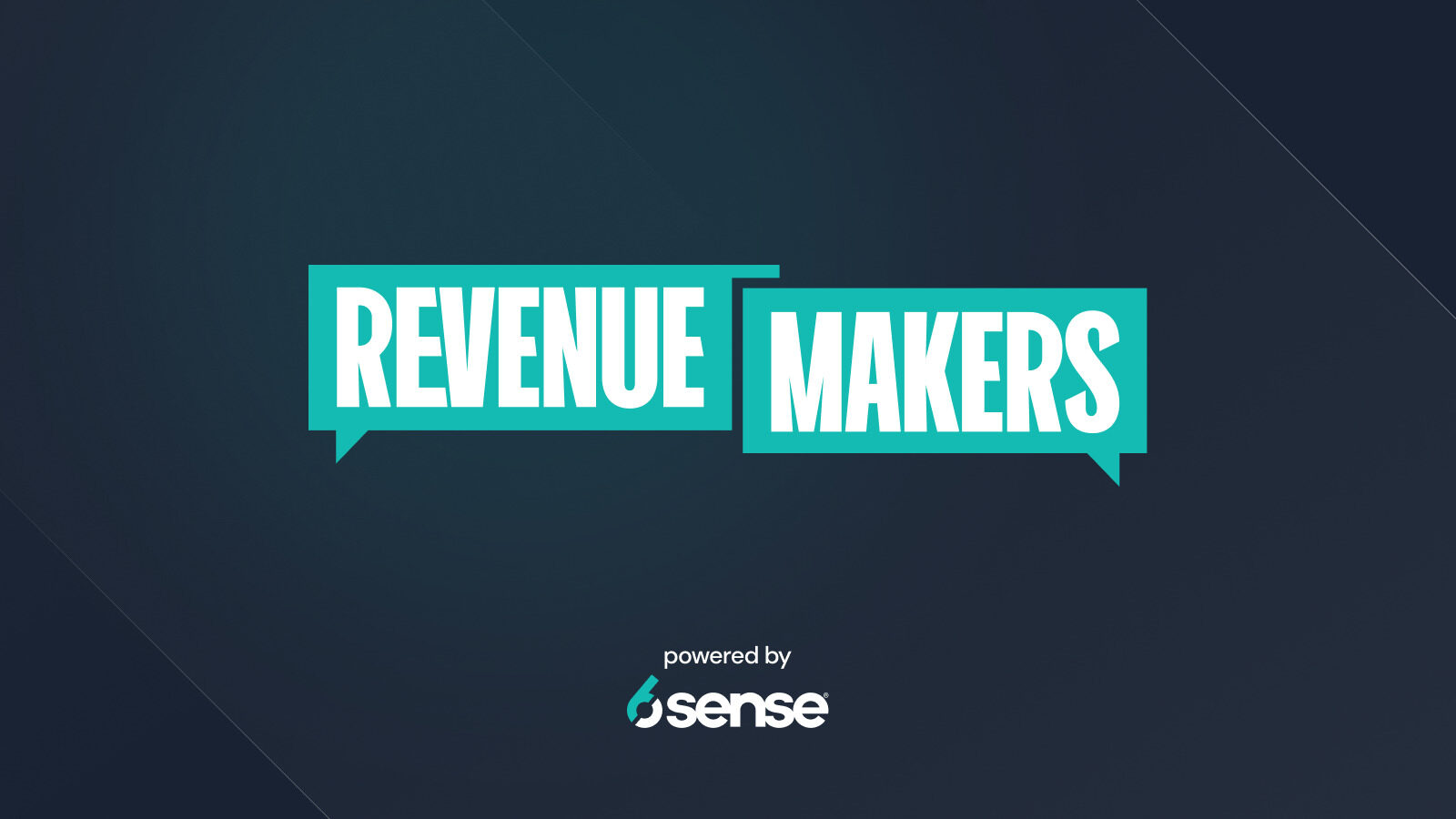Account-based experiences (ABX) and account-based marketing (ABM) have become the cornerstones of many a modern B2B strategy — but implementing these effectively remains a significant challenge for organizations. This transition requires more than just new tools and tactics; it demands a fundamental shift in how companies think about pipeline generation, customer engagement, and revenue operations.
On our Revenue Makers podcast series, we explore these challenges with industry leaders who are successfully navigating the complexities of account-based strategies. From rethinking traditional MQL models to creating engaging experiences that drive measurable results, their insights reveal common themes:
- The importance of human connection in B2B relationships
- The need for cross functional alignment
- The value of taking a measured, strategic approach to change
Here are some of the key lessons we’ve taken away from these industry experts.
Navigating the Transition to Account-Based Revenue
Former Quantive CMO Casey Carey, now with TCP Software, reveals that transitioning to account-based revenue isn’t just a tactical shift — it’s a fundamental change in how organizations think about pipeline generation. The challenge? Getting teams to move away from traditional lead-based thinking.
Rather than making an abrupt switch, Casey’s solution was to manage three distinct revenue motions during the transition:
- Traditional MQL programs: maintaining familiar metrics for teams resistant to change
- Account-based strategies using 6sense Qualified Accounts (6QAs): introducing new ways to identify and engage target accounts
- Self-serve product trials: capturing demand from accounts already showing buying intent
To support the transition, Casey implemented weekly meetings between sales and marketing leadership, ensuring alignment on target accounts and engagement strategies. This balanced approach helped overcome resistance by allowing teams to gradually adapt while seeing the benefits of account-based thinking.
How to 40x ROI With Your Next Digital Event
Drawing inspiration from her background in mathematics and love of gaming, Mutiny’s head of growth, Molly Bruckman, transformed AI education into an engaging game-show style campaign.
The campaign, “Surv-AI-vor,” featured nine episodes with industry experts teaching different marketing disciplines, from ABM to SEO, with each session including challenges and opportunities to score points. Key elements included:
- A growing prize pool ($10,000 plus $1 per signup) to drive virality
- Strategic partnerships with thought leaders and sponsors
- Point-based incentives for watching episodes, completing challenges, and social sharing
- Daily content drops over three weeks
The results were remarkable: “We had about 4,000 people sign up for the game…and we drove $1.7 million in pipeline, which was massive for us,” Molly says. “That ended up being about a 40x ROI.” Half of the registrants came through referrals from other players, demonstrating the power of the campaign’s viral mechanics.
It’s All About the Eventful Experience
6sense’s own EJ Oelling reveals how modern B2B events have evolved from simple gatherings to strategic, data-driven revenue generators. “When I would ask my teammates years ago, ‘was it a successful event?’ They’d say, ‘Oh, people had fun,’” the VP of ABX says. “Now, it’s, ‘OK, what type of accounts and how much pipeline was in the room?’”
EJ’s team approaches events with a formula: Data + Experience = Pipeline
This involves:
- Using account data to identify and target specific audiences
- Creating integrated campaigns around each event
- Setting clear meeting quotas and pipeline goals
- Measuring success through multiple metrics, including win rates
The results speak for themselves: deals touched by ABX events show win rates 10 percent higher than those without event engagement.
EJ believes success comes from treating events not as standalone activities but as complete programs. She says, “We don’t say that we just do events. I say that we do activations. We do experiences.” This means careful pre-event planning, thoughtful content development, and strategic follow-up.
Seamlessly Transitioning to Account Based Marketing
“We’ve spent more time explaining to the revenue org why old world MQLs are bad than we have about the new world and why it’s better,” explains Domenic Colasante, CEO of 2X, about why many organizations struggle with the transition to account-based marketing. He reveals that this move isn’t about systems and processes — it’s about human connections.
A human-centric approach starts with how marketing communicates with sales. When passing qualified accounts to sales teams, Dom emphasizes personal engagement: “Pick up the phone and have a conversation with the rep…’Let me talk to you about what I just sent you: This is what it is; this is what it means; this is where it came from.’” This conversation should include context about an account’s journey, relevant content, and specific suggestions for outreach.
Dom also discussed setting realistic expectations about engagement, mentioning a recent client that required 50 first-party marketing touches and 250 third-party interactions before converting to an opportunity. This understanding helps teams move away from traditional “cold calling” mindsets and toward building meaningful, multi-touch relationships with accounts.
Rather than throwing technology at these challenges, Dom advocates for focusing on the human side of the tools you already use, saying that taking full advantage can lead to “massive gains and performance impact.” The solution isn’t more software — it’s better enablement of the people using it.
How to Incorporate Smart Gift Giving into ABM Efforts
As a former sales rep who built his company from firsthand experience, Sendoso Co-CEO Kris Rudeegraap explains how modern gifting platforms help teams create meaningful connections at scale.
Drawing from data across 10 million gifts sent through the platform, Kris believes successful gifting is about more than just the gift itself: “It’s the right gift to the right person with the right message at the right time — with the right delivery channel.” This approach particularly shines in ABM, where engaging multiple stakeholders within an account is crucial.
The strategy spans the entire customer journey, from initial outreach to customer expansion. “Some people think about ABM as top of funnel…I think about it as the entire customer journey,” Kris says. His team has seen success with everything from milestone-based rewards driving product adoption to incorporating gift offers in ABM advertising campaigns.
So, what gifts work best? While Yeti mugs and socks remain popular standards, Kris says success comes from unexpected choices. Match the gift to your audience; even something quirky like a rubber chicken can work with the right message and the right recipient. The future of gifting lies in deeper personalization, using AI and intent data to create highly targeted experiences that cut through the noise of B2B outreach.
Targeting Your Ideal Customer Profile
Revenue Makers hosts Saima Rashid and Adam Kaiser break down the critical differences between Total Addressable Market (TAM) and Ideal Customer Profile (ICP). As they explain, “TAM is who you could be selling to, and ICP is who you should be selling to” – a distinction that can make or break a company’s GTM strategy.
Building an effective ICP requires cross-functional collaboration, with marketing taking the lead as steward while incorporating input from sales, customer success, product, and finance teams. “Everyone needs to be involved and sign off and agree,” Saima says, but marketing should own the process to ensure accountability.
Remember to keep your ICP dynamic. At 6sense, our ICP is reviewed twice monthly, identifying trends and opportunities by examining:
- Firmographic data
- Technographics
- AI predictions
Regular assessment helps ensure alignment with changing market conditions and company goals. As Saima notes, “Data can be the equalizer when there are different viewpoints.”
Ongoing measurement is also critical: Track web traffic from ICP accounts, engagement rates, and conversion metrics. The speakers share an impressive stat. “Last year, 98% of our ICP did at some point become a marketing qualified account.” But they warn against expanding too quickly without proper infrastructure, sharing a cautionary tale of premature enterprise expansion that led to customer churn.
Getting Creative with Brand and Demand
Tom Stein, CEO and Founder of Stein and part of LinkedIn’s new B2B documentary “Everybody’s Business,” discusses the transformation of B2B marketing and its growing creative ambitions. As B2B represents 50% of the global economy, Tom argues it’s time for the industry to claim its rightful place in the creative landscape.
Pointing to research showing that the top 100 B2B brands are leaving a trillion dollars of enterprise value on the table by underinvesting in brand, Tom outlines three steps for success:
- Increasing investment in brand building
- Pushing creative boundaries beyond traditional conventions
- Unifying brand with demand efforts
The third point is especially significant: By breaking down the traditional separation between brand and demand activities, companies can create unified experiences that follow buyers from initial awareness through purchase — thus developing more meaningful connections with their audiences and driving sustainable growth.
This evolution is reflected in B2B’s recent inclusion at the Cannes Lions Festival, marking a shift in how the industry views creativity. “Better work has better results,” Tom says, emphasizing that creative excellence isn’t just about winning awards; it’s about driving business results through memorable, emotionally resonant marketing that connects with buyers.
 Skip to content
Skip to content



